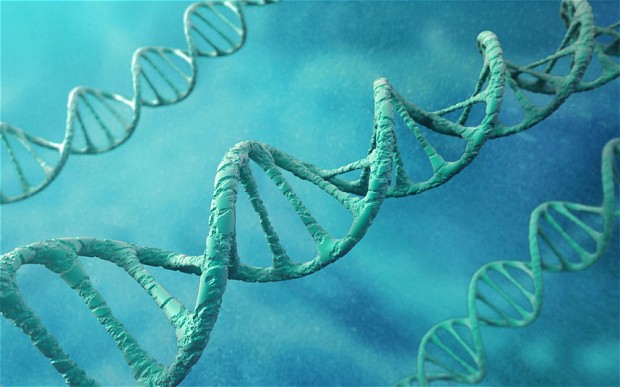Digital Data Stored On DNA. The Hard Drive Of The Future?

Researchers have successfully encoded MP3s, text files and JPEGs into DNA files, claiming that the biomolecular material will become an "attractive storage medium" in just a few decades.
DNA is, as many of you already know, the crucial blueprints of our lives, and as the amount of digital information grows in the world (about three zettabytes’ worth (that’s 3000 billion billion bytes)), reliable long-term storage is becoming a major problem. And the solution could well be DNA storage, with the capability to hold information from a million CDs in a space no bigger than your little finger, and reliably store it without data loss for centuries.
The process involved converting the ones and zeroes of digital information into the four-letter alphabet of DNA code (A, T, G and C). That code was used to create strands of synthetic DNA. Then machines "read" the DNA molecules and recovered the encoded information. That reading process currently takes two weeks; but technological advances are driving the time down.
Unfortunately, they have no intention of putting storage DNA into a real person (bringing new meaning to the worlds 'human jukebox'); but follow this up by saying it won't over run your genetic instructions, because of its unique coding system, allowing for the capability if anyone felt so adventurous
Of course, as researchers at the European Bioinformatics Institute (EMBL-EBI) in Hinxton, England, have shown, it most certainly does not come cheap right now. Goldman’s group made an estimate that it costs $12,400 per megabyte of DNA encoded data, plus an extra $220 per megabyte you load/read. But, as they predict, the price of sequencing and synthesizing DNA continues to go down, bringing this biological storage medium into competition within the next few decades. Plus, in terms of archival storage, DNA poses a strong competition to the 'power-free' likes of magnetic tapes.
"We already know that DNA is a robust way to store information because we can extract it from wooly mammoth bones, which date back tens of thousands of years, and make sense of it,” explains Nick Goldman of EMBL-EBI. “It’s also incredibly small, dense and does not need any power for storage, so shipping and keeping it is easy.”
Specifically, the team tested this by storing all 154 Shakespeare sonnets, a photo, a scientific paper, and a 26-second sound clip from Martin Luther King Jr.'s "I Have a Dream" speech. That all fit in a barely visible bit of DNA in a test tube.
The next step for the researchers is to perfect the coding scheme and explore practical aspects, paving the way for a commercially viable DNAstorage model. Watch this space.
Source: EMBL-EBI
Jason England

